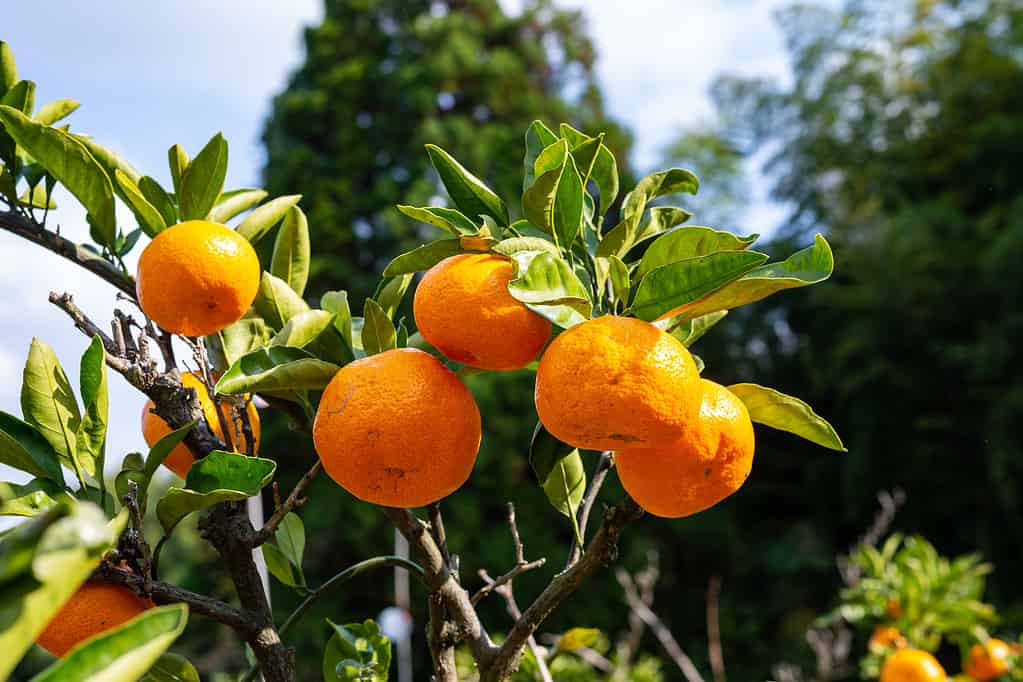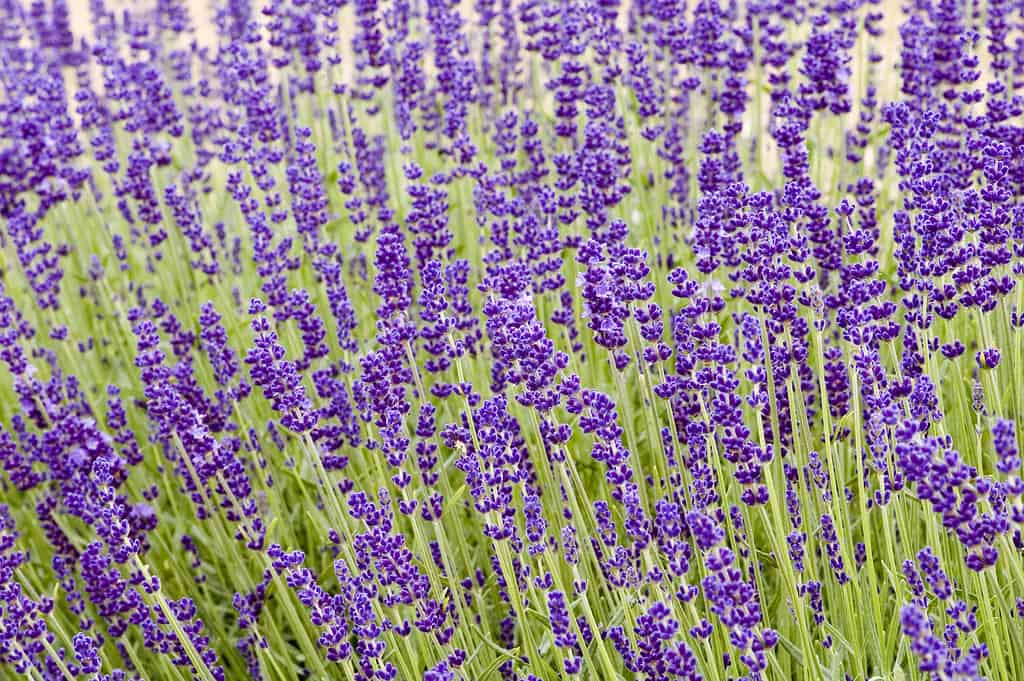Are you writing a story, creating a brand guide, or just wondering about the deeper symbolic meanings of colors? You’re at the right place! In this article, we’ll take a deep dive into the top seven colors that represent strength.
Some colors are more directly or obviously linked to strength than others — red is a great example. However, other colors may represent strength in slightly more obscure, indirect, or unconventional ways. For example, some colors represent spiritual strength, while others symbolize emotional strength, authority, or leadership.
Read on to discover the different connotations of each color, how they uniquely relate to the concept of strength, and where to see them in nature.
Warm Colors
Many would argue that warm colors represent strength in its most obvious and intense form. Three that are especially linked to this “loud” type of strength are red, orange, and gold.
1. Red

Mars, also known as the Red Planet, potentially lends its many historical connotations to the color red. Alternatively, certain meanings may have been attached to the color first and associated with Mars later.
©Artsiom P/Shutterstock.com
Many of us immediately associate strength with the color red, which may be due to its ancient ties to the planet and the Roman god Mars. Many spiritual practitioners still associate Mars and, consequently, the color red with warfare, aggression, and sexuality.
Red is also associated with masculinity, which has traditionally been linked to strength. With that in mind, the color red represents strength in its most overt, physical, and intense form. This makes sense even when you consider where you typically see this color in nature.
Wildfires, lava, and intense sunsets often take on reddish tones. Many fruits also tend to go red when ripe (i.e., when they’re at their most potent), including apples, strawberries, and cherries. Finally, some animals, like the tomato frog, have bright red markings that indicate that they’re poisonous or dangerous.
2. Orange

Some fruits turn orange when ripe, which we’ve learned to interpret as a sign of vitality.
©Matthieu Tuffet/iStock via Getty Images
Orange also symbolizes physical strength but isn’t considered as aggressive as red. It has more to do with the things that empower us humans to feel strong, like vitality, energy, confidence, and enthusiasm.
So, it could be said that orange tends to have more positive and subtler connotations than red. This may be because it also incorporates yellow tones, which are traditionally associated with optimism, joy, and happiness.
In nature, orange is often the most prominent color during the fall season, which is why some cultures associate it with change and transition and consider it to be an especially dynamic color. Certain fruits, such as oranges, tangerines, and apricots, also turn orange when ripe. This further underscores this color’s strong association with physical strength and the color red.
3. Gold

Many are still panning for gold in various places in the world, adding to this mineral’s prestige and popularity. That may be why the color gold has similar connotations.
©aerogondo/iStock via Getty Images
Gold is the color of quality, prestige, luxury, royalty, and, in certain spiritual and religious circles, the color of divinity and higher power.
Unlike red or orange, gold symbolizes long-lasting strength that can’t be easily diminished. Orange and red are dynamic; gold is more unchanging, incorruptible, and durable.
It’s no surprise, then, that many mythological gods and other deities were often depicted as wearing golden garments, or that modern-day monarchs still often wear golden clothes during special occasions such as coronations.
In nature, gold is quite literally present in the form of nuggets or flakes in rivers, streams, and mines. Fossils can also sometimes take on a golden-like appearance, further bolstering the link between gold and long-lastingness. Finally, the golden hour — the time just before sunset and after sunrise — is named after the warm, golden light that blankets the entire landscape.
Cool Colors
As opposed to warm colors, cool colors are associated with quiet strength. They’re typically not linked to physical strength, but rather the strength of character demonstrated during challenging times.
Three cool colors embody this concept particularly well: blue, green, and purple.
4. Blue

Despite being rarely found in nature, blue always surrounds us.
©zoom-zoom/iStock via Getty Images
Blue represents calmness, stability, dependability, truthfulness, and serenity, so it could be said that it is most closely related to emotional strength.
In the past, blue was associated with royalty, the navy, and hospitals, all settings where harmony and order were of utmost importance. This may be why we still view people in blue uniforms, for example, as highly dependable and trustworthy.
Blue, however, is not only interesting for its symbolism but also for its rarity. It is as rare in nature as it was historically.
In fact, Egyptians were the only ancient civilization that had a word for blue, as they were also the only ones who found a method for producing blue dye. For others, including ancient Greeks and Chinese, the color blue remained an undiscovered mystery.
In nature, the sky and bodies of water often take on blue tones, but you’ll rarely find blue plants or animals. The blue jay, blue penguin, and blue iguana are some of the very few exceptions.
5. Green

Nature is strongly connected with the color green.
©fongbeerredhot/Shutterstock.com
Green is associated with stability, growth, fertility, and endurance, likely due to its strong ties to nature. You can take most plants as an example. We consider them healthy when their stems and leaves are green. Yellow or brown hues, on the other hand, usually indicate disease or stress. So, green signals that a plant is strong enough to grow and flourish.
Some vegetables, such as broccoli or cucumbers, also have a green exterior, which may be why many associate green with health. For example, when we say we’re going green, we’re implying that we’re doing something healthy for the environment. Here green represents positive inner strength and, more precisely, health.
In traditional cultures, green also sometimes represents renewal and rebirth, particularly in the context of springtime when plants and trees begin to sprout new leaves.
6. Purple

Purple is the trademark color of lavender and several other flower species, but is not commonly found in nature.
©gardendata/ via Getty Images
The purple color is associated with some of the same ideas as gold. It represents royalty, wealth, and dignity, but also more spiritual qualities such as divinity, wisdom, and mystery. So, purple is mostly about societal and spiritual strength, and a powerful one at that.
Yogis, for example, associate purple with the crown chakra. It is considered to be the most potent out of all chakras because it connects yogis with the divine.
Much like blue, purple is relatively rare in nature, as there aren’t a lot of pigments that could create purple hues in the natural world. We’ll mainly find it in flowers, such as lavender, violet, and iris, and fruits like grapes and plums.
Neutral Colors
Neutral colors tend to represent strength in its most authoritative form. They have more to do with influence and power than anything else. Black in particular has strong connotations along these lines.
7. Black

The color black is often connected with things you can’t fight or do anything about, such as rain clouds.
©ojoel/iStock via Getty Images
Black is associated with many different traits, including quality, depth, mystery, protection, power, class, elegance, sophistication, and authority. It also represents strength connected to leadership, influence, and control.
In spiritual circles, it is often associated with finality, especially death, which again hints at black’s supreme authority. There’s no fighting death; it affects all living beings just the same.
Black is also one of the rarer colors in nature. However, some animals do boast black coloring, including the black panther and black bear. The deep sea can also sometimes appear black, which may be why we often associate this color with mystery and the unknown. Clouds can also appear near-black just before the storm.
Summary of the 7 Colors That Represent Strength
| Color | |
|---|---|
| #1 | Red |
| #2 | Orange |
| #3 | Gold |
| #4 | Blue |
| #5 | Green |
| #6 | Purple |
| #7 | Black |
The photo featured at the top of this post is © fcscafeine/iStock via Getty Images
Thank you for reading! Have some feedback for us? Contact the AZ Animals editorial team.






